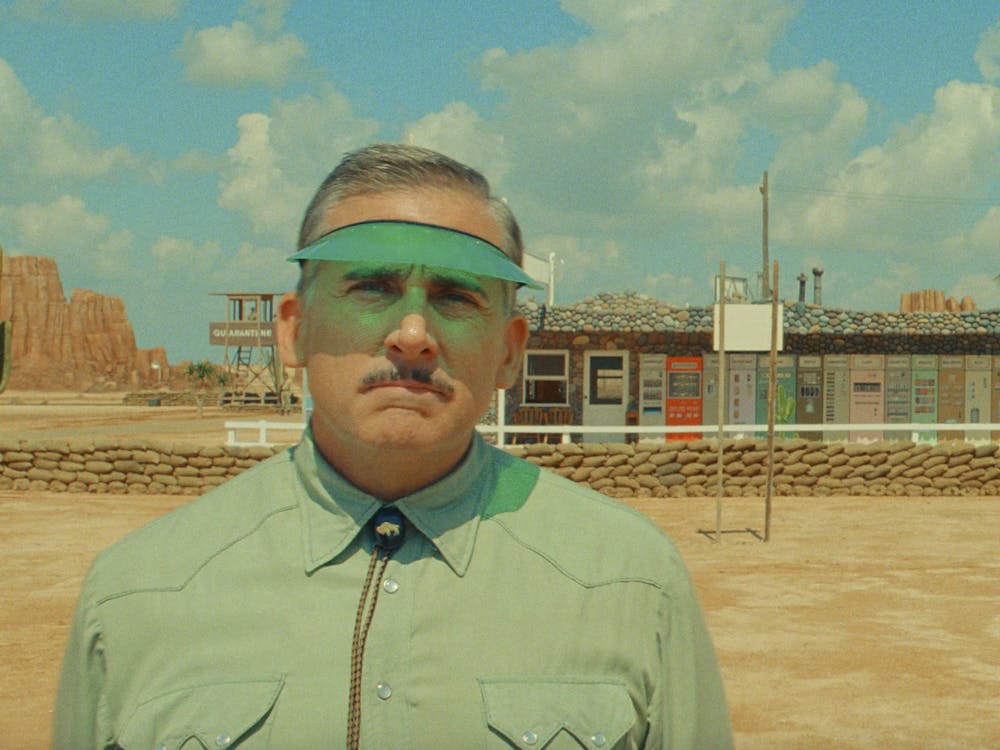With all the renovations Newcomb Hall has undergone in the past few years, it can be easy to forget that the building is a hotbed of student life. Every Friday and Saturday, the University Program Council hosts Newcomb Theater Movie Nights. They show two movies — often popular releases that have left theaters but not yet made it to stands — each night for the unbeatable price of only $3. Upcoming movies include “Warm Bodies,” “Star Trek: Into Darkness,” and “Monsters University.”
My first Newcomb viewing was of Joss Whedon’s “Much Ado About Nothing.” While the earlier showing of “The Great Gatsby” attracted an audience large enough to stretch the ticket line out the door, “Much Ado About Nothing” was more intimate with a crowd of about 50 people — just large enough to achieve resounding community laughs, but small enough to lack frequent movie theater background noises.
The movie retells one of William Shakespeare’s more popular comedies, including such characters as the witty Benedick (Alexis Denisof), the merry Beatrice (Amy Acker), the incompetent constable Dogberry (Nathan Fillion) and the villainous Don John (Sean Maher), the lot of whom unite with an array of honorable aristocracy to hatch matchmaking schemes and evil plots.
Until the day before the showing, I had been expecting the 1993 rendition of “Much Ado About Nothing,” starring an exceptional cast of Kenneth Branagh (Lockhart from “Harry Potter”), Denzel Washington, Emma Thompson and other big-name actors. This version of the movie has long been one of my favorites, and I entered Newcomb very skeptical of this newer version. Thankfully, I was pleasantly surprised. The newer version of the movie has such a different feel from the 1993 movie, in fact, that I was able to enjoy the newer version as a distinct cinematic experience.
Whedon takes a very original perspective on the play, filming in black and white and dressing the set with modern props. The quiet extravagance of the costumes, props and gestures produces a light, artistic feel. The movie sometimes comes across as a low-budget, raw film — but this does nothing to detract from the movie’s quality. Rather, it creates a familiarity that draws in the viewer. The film is cleverly cast, featuring Nathan Fillion (“Castle”), Clark Gregg (Agent Coulson of “Iron Man”) and a large number of actors and actresses from well-known television shows.
True to Shakespeare, the play is full of sharp repartee, and the cast does an excellent job of continuing the humor through their comical gestures and movements. Indeed, the cast’s movements were almost theater-like, probably resulting from their heavy television background. Wes Anderson fans might better appreciate the humor — since Whedon’s humor is often reminiscent of Anderson’s work. Though the script remains dated, the producers throw in modern humor through props and gesture. Overall, the result of the combined witty script and uproarious action is hysterical.
My complaints are few yet specific. I disliked Fillion’s portrayal of Dogberry; I found the character’s ineptitude too blunt to be truly comical. In Branagh’s “Much Ado About Nothing,” there was more character development and the greater subtlety in Dogberry’s role added comedy. Furthermore, and this critique is more directed toward Shakespeare himself, I’ve never quite appreciated the quick mood shifts of the plot. They may be necessary given time constraints, but I deplore the emotional jumps from grief or hatred to blissful and cheery in the same scene. Outside of these minor qualms, the movie is terrific. Both Newcomb and Whedon’s “Much Ado About Nothing” are worth checking out.




